Boat and Ship Building
 Boat building is as old as sailing on water by man. Man learnt to cross water bodies from very early times. In the beginning logs of wood were probably found suitable to use as these floated easily on water. In due course pieces of logs were joined to make rafts which could balance the people on board. Gradually boats were made after use of metal by early men.
Boat building is as old as sailing on water by man. Man learnt to cross water bodies from very early times. In the beginning logs of wood were probably found suitable to use as these floated easily on water. In due course pieces of logs were joined to make rafts which could balance the people on board. Gradually boats were made after use of metal by early men.
In India reference to boats and ships are found even in Vedic literature. In later times specific treatises or Silpasastras on boat building were made and different categories of boats were accordingly prepared.
Without a boat or ship building industry it is impossible to think of trans-oceanic voyages and maritime trade for a region or a people. In Odisha one finds many boat building centres even now producing both riverine boats and small seafaring vessels.
This gallery portrays the boat building activities of ancient Odisha as gleaned from various sources through photographs, charts, dioramas and models. In this gallery it is aimed to educate the interested visitors on the different parts of an actual boat, which are still made in few centres of Odisha and the related process of building a boat and the rituals.
While boats play on rivers, lakes and other large water bodies, Ships were the means to sail across high seas. Literary references as well as depiction of boats and ships in sculpture, painting, coins, terracotta figurines and clay seals give us an idea about the types of vessels used earlier by people of the Indian sub continent. In Indian context voyages on sea is referred to in the Vedic literature. Before the Vedic age the Harappan culture had developed and mastered the art of sea voyage as evident from the excavation at Lothal in Gujrat where a dock-yard has been exposed.
In due course different boats and ships and navigational skills were developed and we find traditional Silpa texts prescribing the construction of different types of boats for both inland and sea voyages. These are listed below.
Here an attempt has been made to present different types of boats and vessels of earlier period as found in visual art forms and contemporary ones now being used both in inland waters and high seas.
In Odisha the literary references as well as specific texts dealing with construction of boats such as Arnaba Vihara, Ratnakara Vihara, indicate to a variety of boats, both riverine and seafaring.
Boat classification
| A.A.Samanya |
B.Vishesha or Arnabapota or Boita. |
| Kshudra |
B.A.Diroha |
| Madhyama |
B.B. Unnata |
| Bhima |
|
| Chapala |
|
| Patala |
|
| Dirgha |
|
| Bhaya |
|
| Patraputa |
|
| Garvara |
|
| Manthara |
|
| B.A.Diroha |
B.B.Unnata |
| Dirghika |
Urdha |
| Tarani |
Anurdha |
| Lola |
Suvarnamukhi |
| Chatwara |
Garbhini |
| Gamini |
Manthara |
| Tari |
|
| Janghala |
|
| Plabini |
|
| Dharani |
|
| Begini |
|
Samanya Type Boats
| Sl.No |
Name |
Length(in ft) |
Breath(in ft) |
Height(in ft) |
| 1 |
Kshudra |
24 |
06 |
06 |
| 2 |
Madhyama |
36 |
28 |
12 |
| 3 |
Bhima |
60 |
30 |
30 |
| 3 |
Chapala |
72 |
36 |
36 |
| 5 |
Patala |
96 |
48 |
48 |
| 6 |
Dirgha |
132 |
54 |
54 |
| 7 |
Bhaya |
108 |
66 |
66 |
| 8 |
Patraputa |
144 |
72 |
72 |
| 9 |
Garvara |
168 |
84 |
84 |
| 10 |
Manthara |
180 |
90 |
90 |
Diroha(Vishesha) Type Boats
| Sl.No |
Name |
Length(in ft) |
Breath(in ft) |
Height(in ft) |
| 1 |
Dirghika |
48 |
06 |
05 |
| 2 |
Tarani |
72 |
09 |
07 |
| 3 |
Lola |
96 |
12 |
10 |
| 4 |
Chatwara |
120 |
15 |
12 |
| 5 |
Gamini |
144 |
18 |
14 |
| 6 |
Tari |
168 |
21 |
18 |
| 7 |
Janghala |
192 |
144 |
10 |
| 8 |
Plabini |
215 |
24 |
22 |
| 9 |
Dharani |
140 |
30 |
24 |
| 10 |
Begini |
164 |
33 |
26 |
Unnata(Vishesha) Type Boats
| Sl.No |
Name |
Length(in ft) |
Breath(in ft) |
Height(in ft) |
| 1 |
Urdhva |
48 |
24 |
24 |
| 2 |
Anurdha |
72 |
36 |
36 |
| 3 |
Suvarnamukhi |
96 |
48 |
48 |
| 4 |
Garbhini |
120 |
60 |
45 |
| 5 |
Manthara |
144 |
72 |
72 |
Steps of Construction of a boat in Odisha
- The required type of wood is selected and properly seasoned
- Wooden planks of good quality are arranged.
- Planks are cut to size and shaped by finishing work,
- Bending of the wooden plank is done by heating and putting pressure up to fixed time.
-
Planks are joined to required shape gradually with inner support for creating breadth, side
inclination etc.
- The joints fixed by iron nails.
- The joints are also made water tightened .
- Boat is completed as per required shape and size.
- It is shifted to water front for floating.
- Rituals are performed before sailing of the Boat.

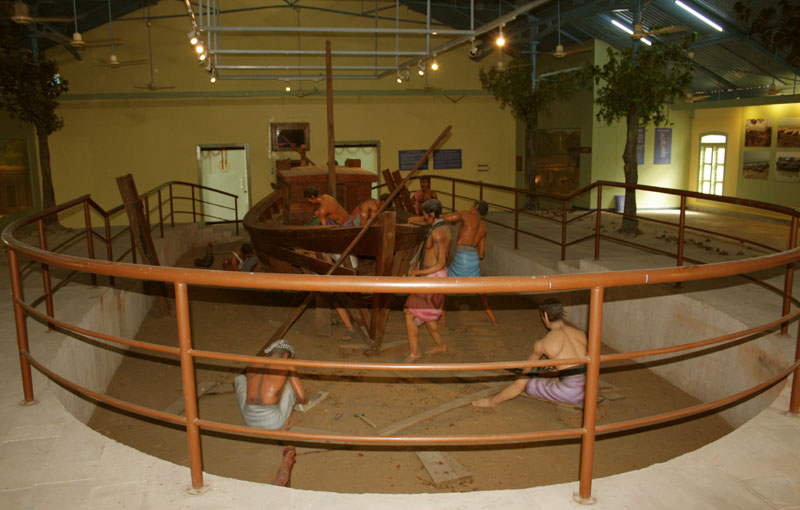
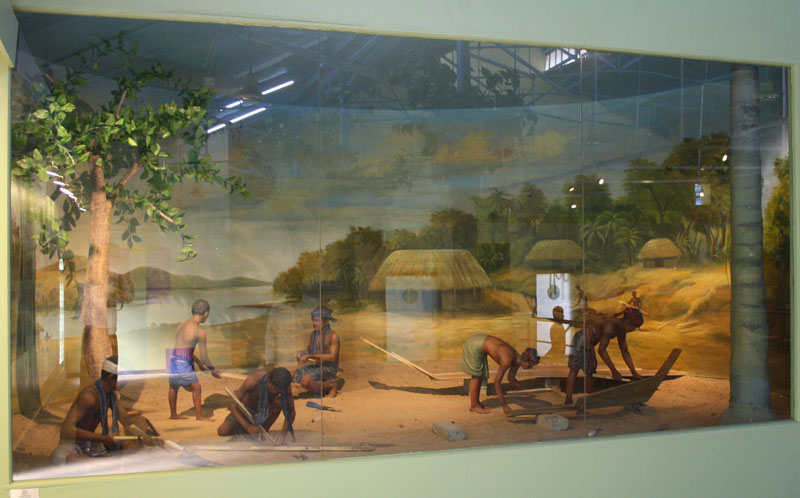
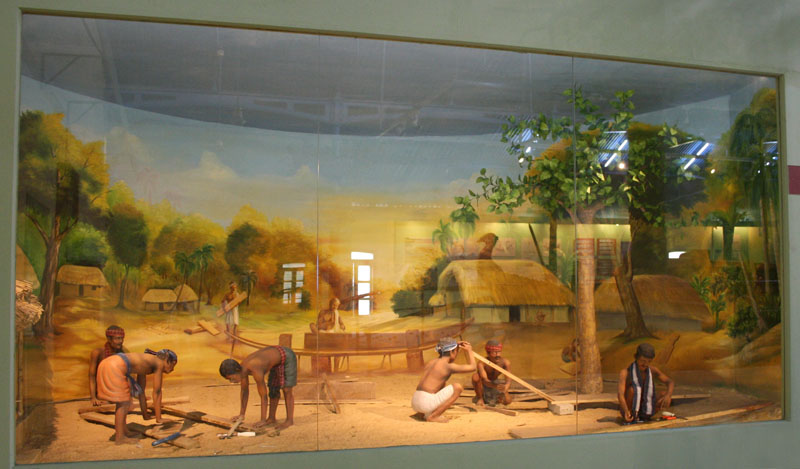
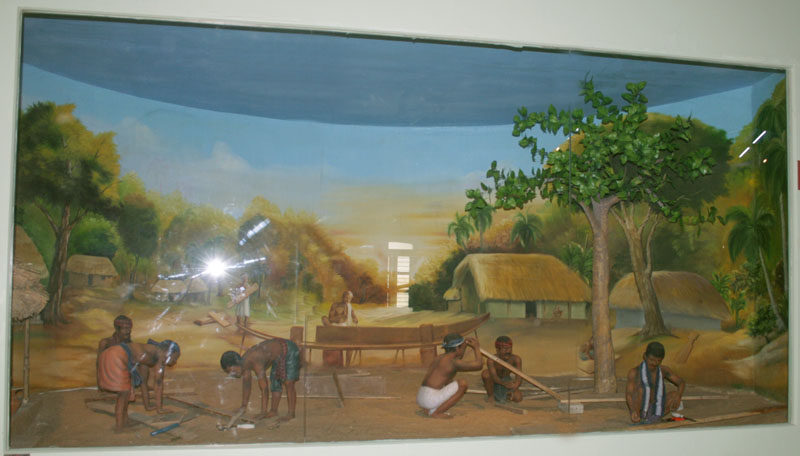
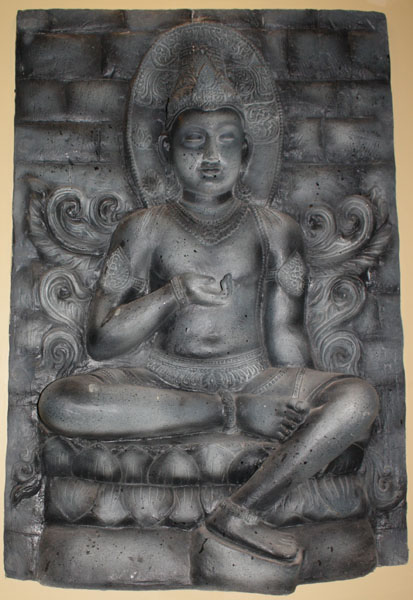
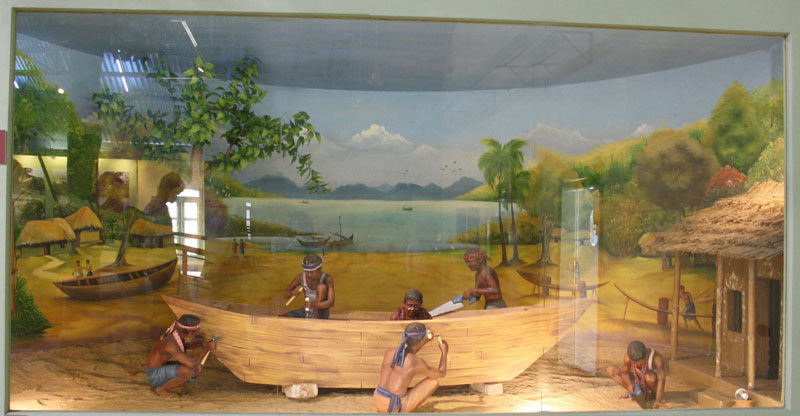
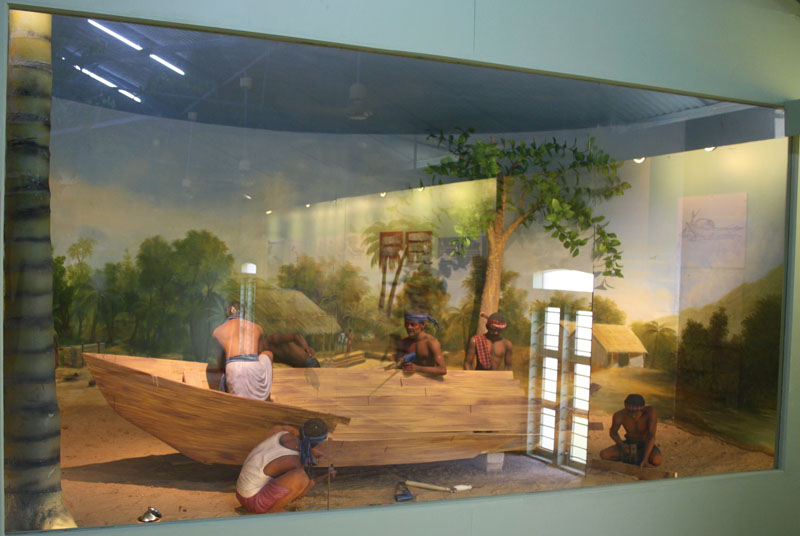
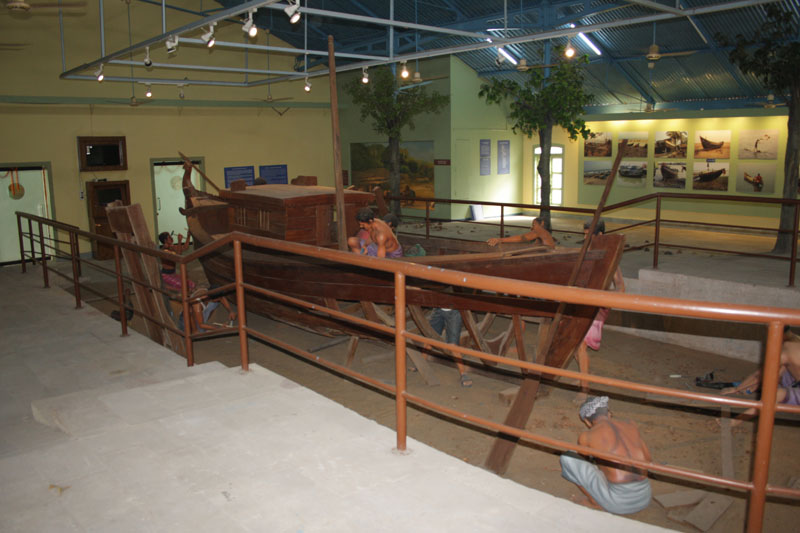
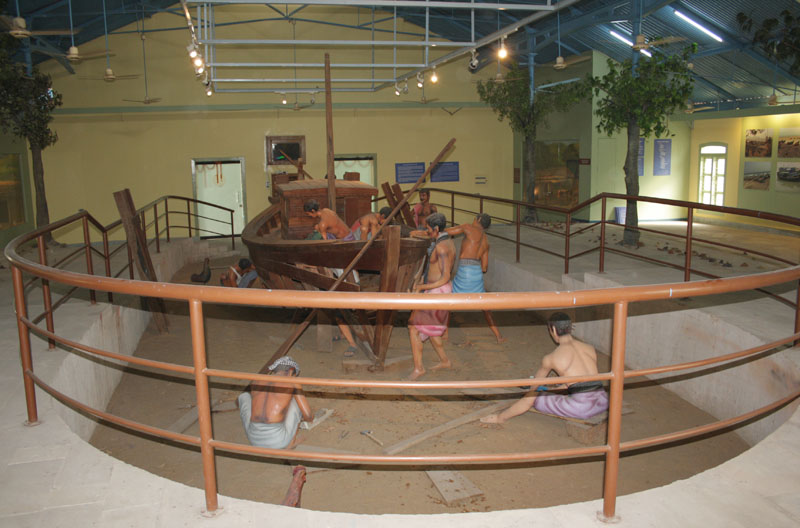
 Boat building is as old as sailing on water by man. Man learnt to cross water bodies from very early times. In the beginning logs of wood were probably found suitable to use as these floated easily on water. In due course pieces of logs were joined to make rafts which could balance the people on board. Gradually boats were made after use of metal by early men.
Boat building is as old as sailing on water by man. Man learnt to cross water bodies from very early times. In the beginning logs of wood were probably found suitable to use as these floated easily on water. In due course pieces of logs were joined to make rafts which could balance the people on board. Gradually boats were made after use of metal by early men.